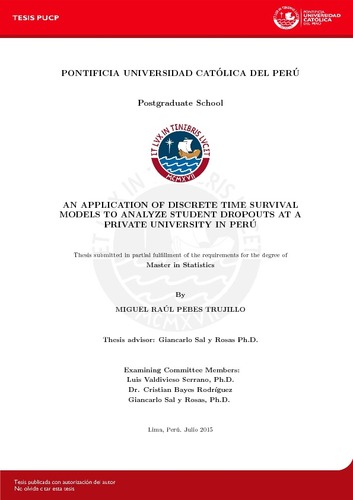An application of discrete time survival models to analyze student dropouts at a private university in Peru
Abstract
Discrete-time survival models are discussed and applied to the study of which factors
are associated with student dropouts at a private university in Lima, Per_u. We studied the characteristics of 26; 790 incoming students enrolled between 2004 and 2012 in all the under-graduate programs at the University. The analysis include the estimation of the survival and hazard functions using the Kaplan-Meier method and the _tting of parametric models using the Cox proportional hazards regression and the Logistic regression for survival analysis, this last one, in order to include time varying variables as predictors. During the period of analysis, the cumulative probability of remain at the University after _ve years was 73.7% [95% CI: 73.1% - 74.4%]. In any period the hazard is greater than 4.4% and this highest value is reached in the 3rd semester. In a multivariate analysis, we found that academic factors (area of study, type of admission, standardized academic performance index, and the percentage of passed credits); economic factors (type of residence, and payment scale); and sociodemographic factors (mother education level, indicators of whether or not parents are alive, and the age of the student) were associated with the risk of dropout.
Temas
Sobrevivencia (Biometría)
Biometría
Análisis de series cronológicas
Análisis de regresión
Estudiantes universitarios
Biometría
Análisis de series cronológicas
Análisis de regresión
Estudiantes universitarios
Para optar el título de
Maestro en Estadística






